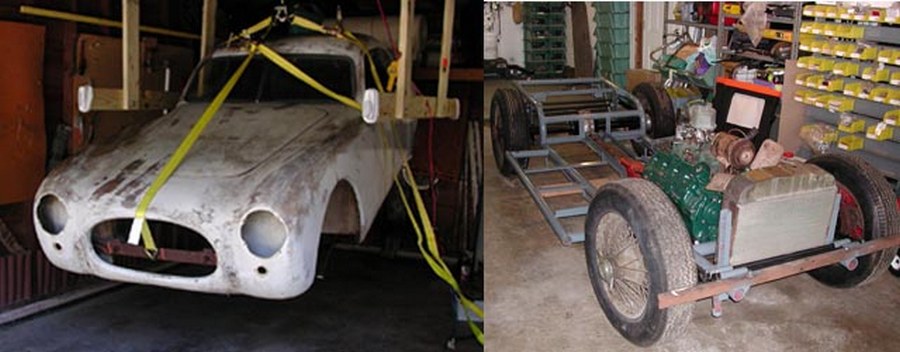
Hi Gang…
Bill Fester of Houston, Texas wanted an Allied Swallow Coupe. The Allied looked just like the car he saw – a Multiplex Sports Car – shown in John Gunnell’s book “Standard Catalog of American Cars: 1946-1975.” Bill had noticed the Multiplex because it had been built in the same town in Pennsylvania from which he hailed – Berwick.
He now had a mission – find a car that matched the Multiplex – a car with a link to his childhood home. And boy would that mission turn out to be an adventure – not just in finding an Allied Swallow Coupe, but in researching the lost history of his car too!
Researching The History of Vintage ‘Glass Cars
Every vintage ‘glass car we find has a history – it just may be temporarily “lost.”
Many of these histories of these special cars are out there – you just have to have the fortitude to go out, do the research, follow-up leads, look to the heavens and ask for help, and sometimes get real, real lucky. And as many of you have found out – you may have to do ALL of these to get that history on that vintage ‘glass sports car of yours.
Bill Fester was up to the challenge. I asked him to put together a story based on what he’s learned since purchasing his car in 2006. The story that follows is the result of his kind gesture in putting this together for us here at Forgotten Fiberglass (thanks Bill!).
And now…without adieu….take it away Bill
The Story of My Allied Swallow Coupe
By Bill Fester
Following the extreme dangers of WWII, a lot of servicemen came back looking for anything approaching the adrenaline rush of what they’d been through. For that reason a young 20 something Jud Phillips returned to his native California after being stationed in Germany.
He was a good mechanic, having done some of that for Uncle Sam, and he found work at the Estes Lincoln Mercury dealership in the Los Angeles area. Bob Estes knew the value of racing in promoting his brands and supported everything from oval track cars, to road racing, and in Jud he found the talent to put together some of the best oval track machines out there.
His earliest efforts at winning the Indy 500 with a Mercury flathead in the late ‘40s were denied solely because of the failure of the Model A transmission he used. Quiet and a bit of a loner, he did make friends with a fellow veteran who had also been building a lot of racecars: AJ Watson.
Together at Estes, with AJ focused on chassis design, and Jud on engines, they were an amazing duo. AJ went on to the Leader Card racing team (and ultimately built 7 winning Indy 500 cars plus many others), while Jud stayed with Estes through most of the 1950s and ultimately helped Bobby Unser win the 500 in 1968.
Sometime in what we believe to be 1953, Jud got the idea to build an ultimate sportscar. He purchased an Allied body and, using largely current oval track technology, set about putting together a chassis which looked like it came straight off of a track car.
As compared to most of the Allied Coupe Sports Cars of the time which simply slipped onto an MG chassis, his was largely two mild steel tubes (hand bent) stiffened by a long 1” V shaped truss rod on each side. The front and back suspensions were cross torsion bars and very similar to a Kurtis chassis (Kurtis chassis used crossed bars; Jud’s were straight). Lateral stabilizing at the back was a device called a Jacob’s Ladder.
Rear differential ratio could be varied through the Halibrand quickchange rear end (Jud used a Champ version produced before 1950). Brakes were also Halibrand spot disks as used on the track. Even the wheels were Kelsey Hayes track wheels, an odd 60 spoke arrangement with a track type knock off.
Some elements of a donor Jaguar XK120 were adopted as was a liberal use of the Ford parts bin for such things as steering box and master brake cylinder. Inside the car he employed a Jones tachometer, an aircraft boost gauge, and an odd Stewart Warner truck cluster instrument which even included fuel pressure. There was no speedometer.
Up front, Jud fully intended to use a turbocharged Offenhauser 220. This was not the latest offering from the company at that time, but evidently was available to him, and despite the fact that I didn’t receive that engine with the car, Jud retained that 220 for the rest of his life until he passed away in 1989.
In fact, it was because of this engine that I first identified the car as having belonged to Jud. The Offy 220 was to have utilized a Norton (aircraft) carburetor, and given what was common practice, the turbo would have offered up perhaps as much as 35 psi of boost or more.
Estimated output of the engine (according to AJ Watson) would have been between 300-400 horsepower. Today this is commonly achieved in simple showroom Mustangs, but this was ‘53, when Corvettes were only offered with the Blue Flame Six and a two speed automatic transmission.
The Allied, given the weight of chassis, drivetrain and body would most likely have tipped the scales below 2000 lbs which would have made it ridiculously fast, providing you could get adhesion from the 6.50 x 16” track tires.
What was he building this quick coupe for?
No one seems to know. According to all sources I’ve been able to find, the standard comment was that he was largely going to “just drive it around”. AJ Watson himself once put an Offy in a Triumph and used it that way for a few years but ultimately swapped it for something easier to operate.
Offenhauser engines were designed to run on alcohol, and largely intended to run wide open. They used magneto ignition, had no generator for storing electricity and simple things like starters were never included with the engine. However, besides AJ, there have been some other attempts at making Offenhausers streetable, and it’s certainly possible that given Jud’s skill, he could have made this possible.
There’s plenty of evidence that an Offy would have sat in that bay including the front motor mount, and the tank holder for the dry sump system. Some suggest that perhaps he intended to use this for some road racing (Estes participating heavily in road tracks and was a mainstay in the Panamerica road races from 1949, to 1954 and I believe Jud did attend these).
Perhaps he was looking at Briggs Cunningham who raced an Offy powered sportscar. However, the tank in the car isn’t more than 10 gallons, and so if it would have been raced, it probably wouldn’t have been in an endurance effort. It’s even possible he could have made it for a series most folks today can’t imagine: dirt track sportscar races.
Whatever the goal, at some point Jud lost interest, or just became consumed with too many other projects. It was in this period that he got married, and within a year or so, his wife gave birth to their only child. For a family man, even a racing family man, there were probably just too many demands to spend his free time building an ultimate sportscar.
The car was first covered with a tarp in the lot at his racing garage in Glendale. Later it was towed to the back of a friend’s store, then to the Konze Brothers machine shop (located in what is today the Watts area of LA). There it sat for decades under a shed type roof as a possession of one of the greatest Offenhauser packrats of all time.
When Vince Konze passed away, the stash of all manner of things was dispersed, and the Allied coupe was bought and sold a few times (including once for nothing other than the Jones tachometer which was used in another racecar restoration project). Ultimately I bought it in 2006.
Currently, the Allied is in the middle of a slow restoration.
The intent will be to both restore, and complete a car that never was. Many restorations are somewhat of a compromise, and this is no exception. The suspension will remain torsion bar, the Halibrand differential stays (and it will be noisy), and the Halibrand disc brakes will be as close to what Jud was using as possible (but still stop the car).
The biggest variance will be the engine. The costs of old Offenhausers are extreme, and modifying one to run on Houston roads (in the Summer), could be extremely challenging. As Jud worked for a Mercury dealership, and was extremely fond of flatheads, my choice for propulsion will be a modestly modified ’51 Merc flathead, something, that if Jud had given up on the Offy as AJ did, would make it a period correct and very drivable engine.
It will be coupled to a period correct Ford three speed with overdrive. The gauges will be in place (except the Jones tachometer), but I probably will have to add a period correct speedometer for DOT regulations.
Given that everyone seems to think Jud was just going to drive it around, I’m going to build a car largely to drive around. Fact is, the whole project has been a completely life altering one for me. From the first point of understanding what an Allied body was (my hometown, Berwick, Pennsylvania, is the home of the Multiplex who used an Allied body when they built their car), to meeting Bill Burke at Bonneville a few years ago and understanding how the Allied bodies came to be, to visiting with a range of Indy icons including AJ and Joyce Watson and even spending time with Jud’s wife Sally before she passed away a few years ago.
As Geoff can tell you, the research can be completely consuming, and that’s not including the real elements of disassembling and rebuilding a real car that one man dreamed of, but never got around to completing. It’s truly a complex and ongoing project like none other.
Summary:
Bill is reaching about midway into the restoration of his Allied Swallow Coupe – the Jud Phillips Special. Much has been completed, and much remains to be done as he’s shared with us above. Thankfully, fiberglass doesn’t rust, so time is on Bill’s side
Thanks again to Bill Fester for putting together today’s story, and sharing what he’s learned on his research journey into vintage ‘glass. Please visit Bill’s website where he is documenting his restoration by clicking on the link below:
http://alliedcarproject-bfester.blogspot.com/
Hope you enjoyed the story, and until next time…
Glass on gang…
Geoff
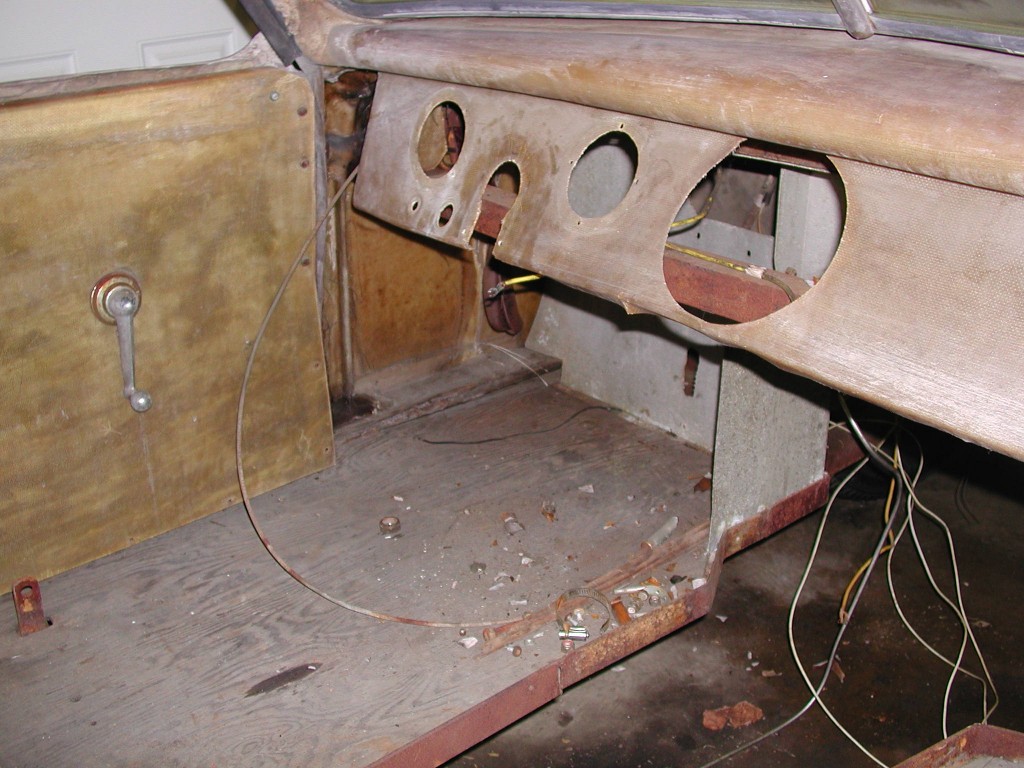
——————————————————————-
Click on the Images Below to View Larger Pictures
——————————————————————-
- As Found In The Konze Brothers Garage Area

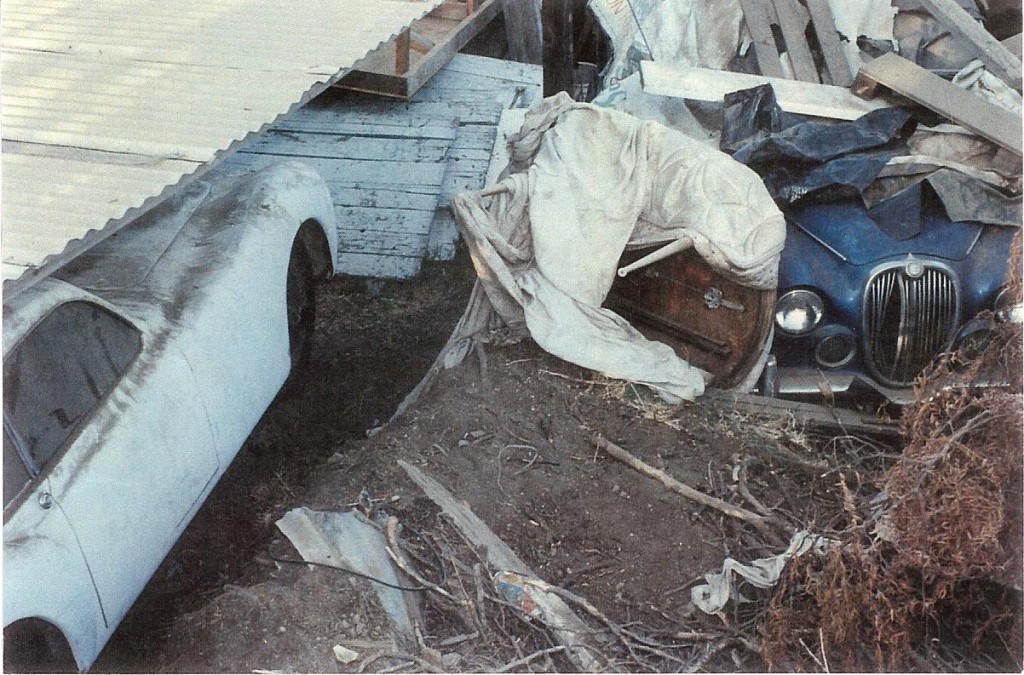


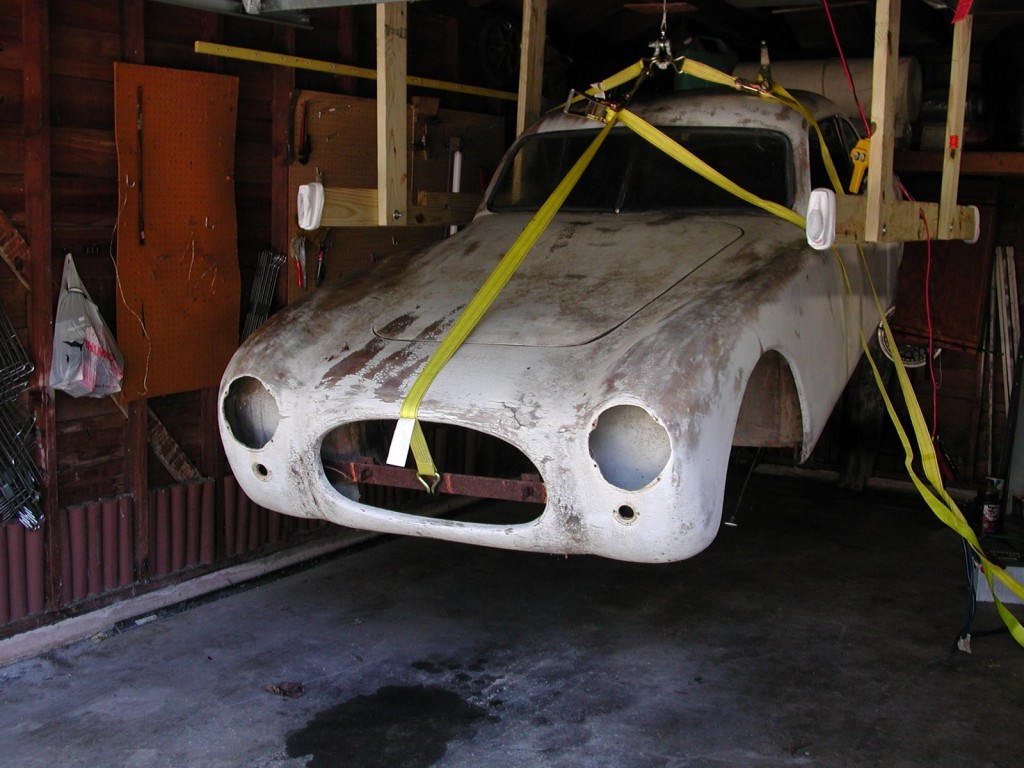
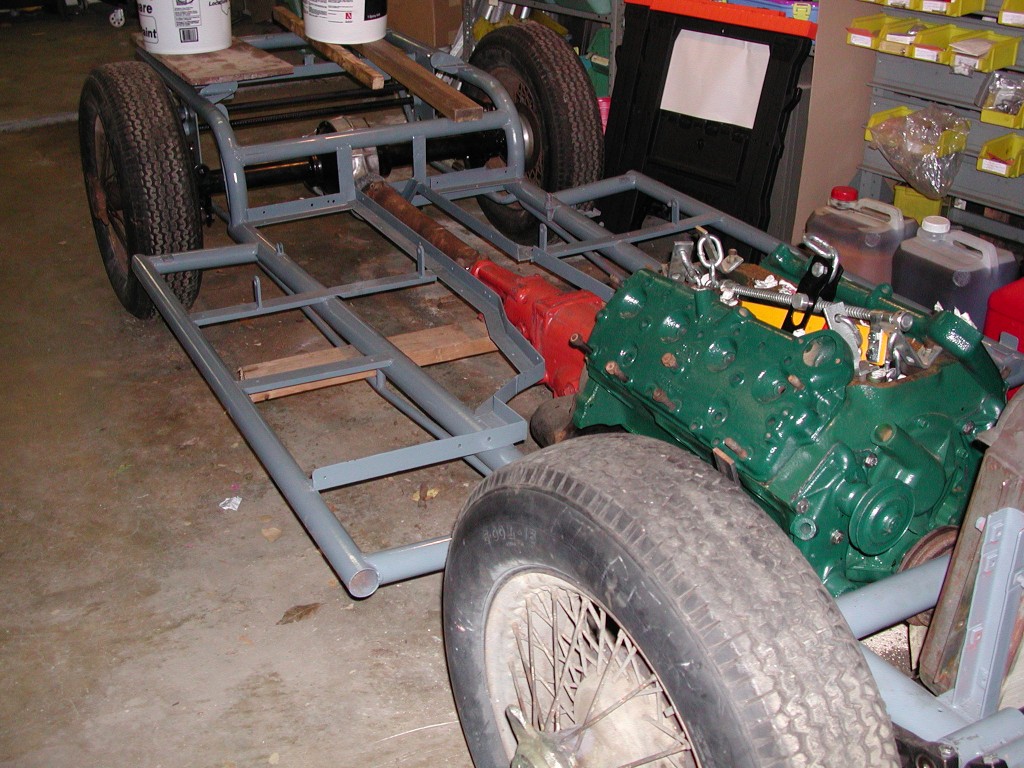
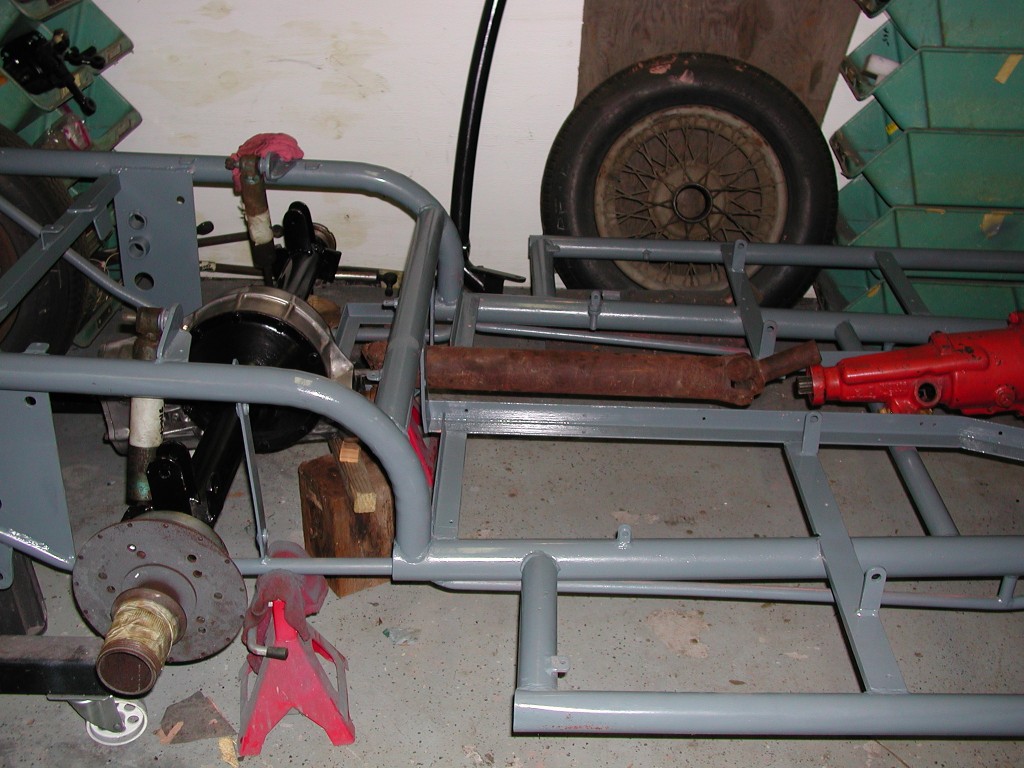
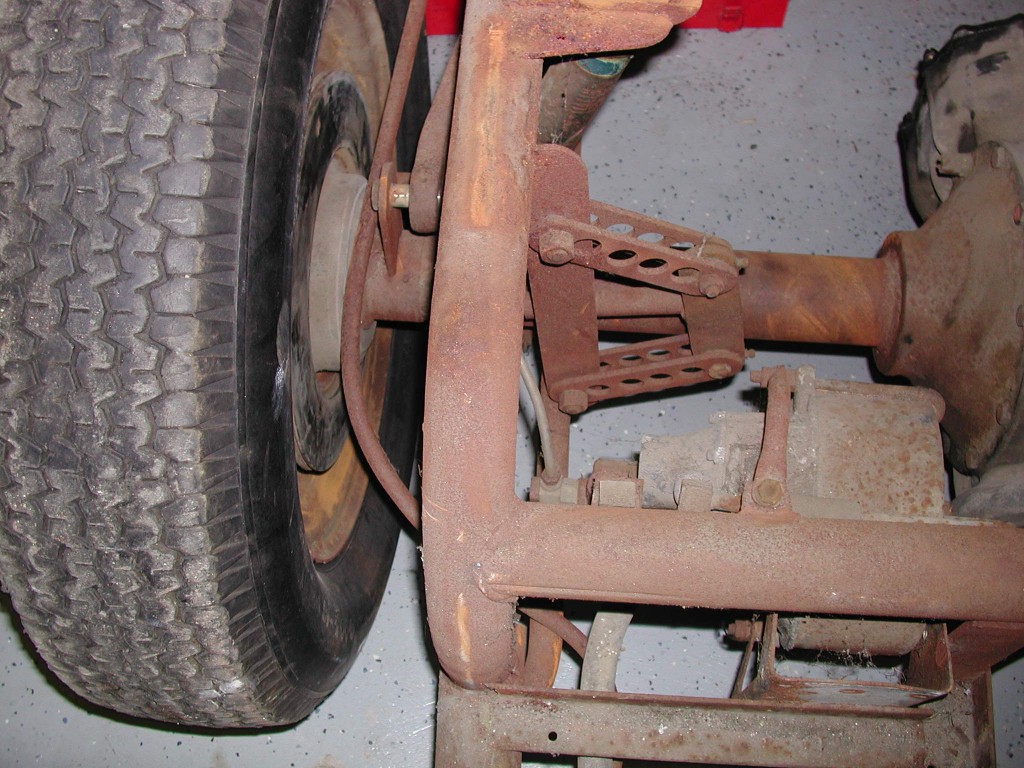
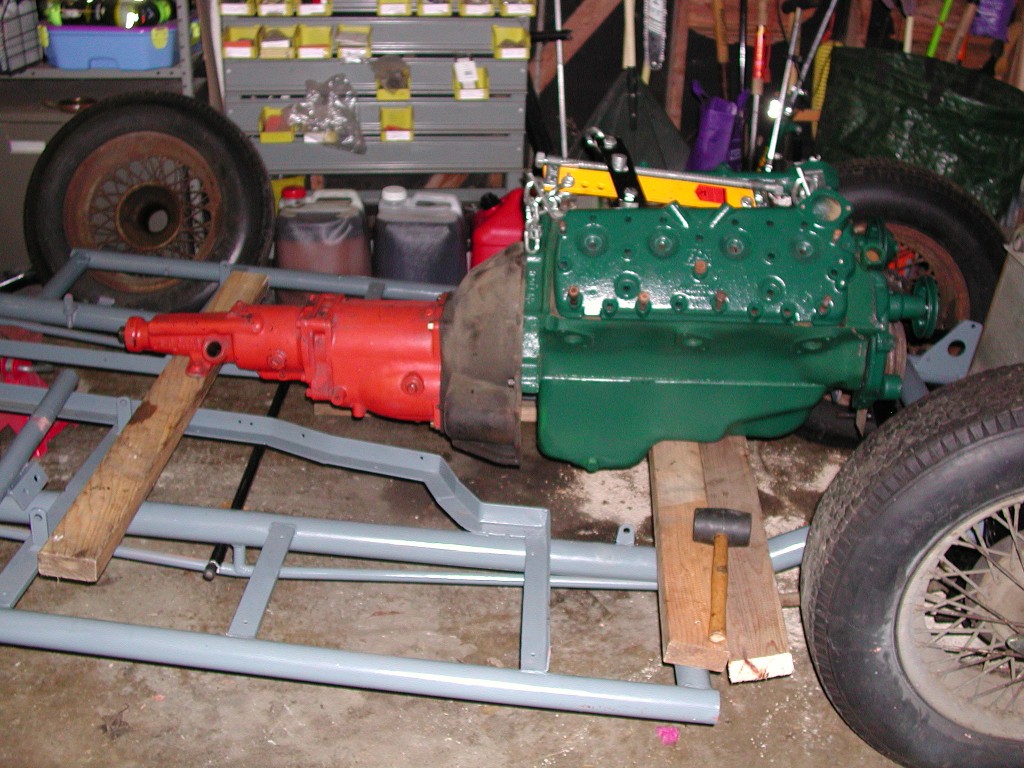
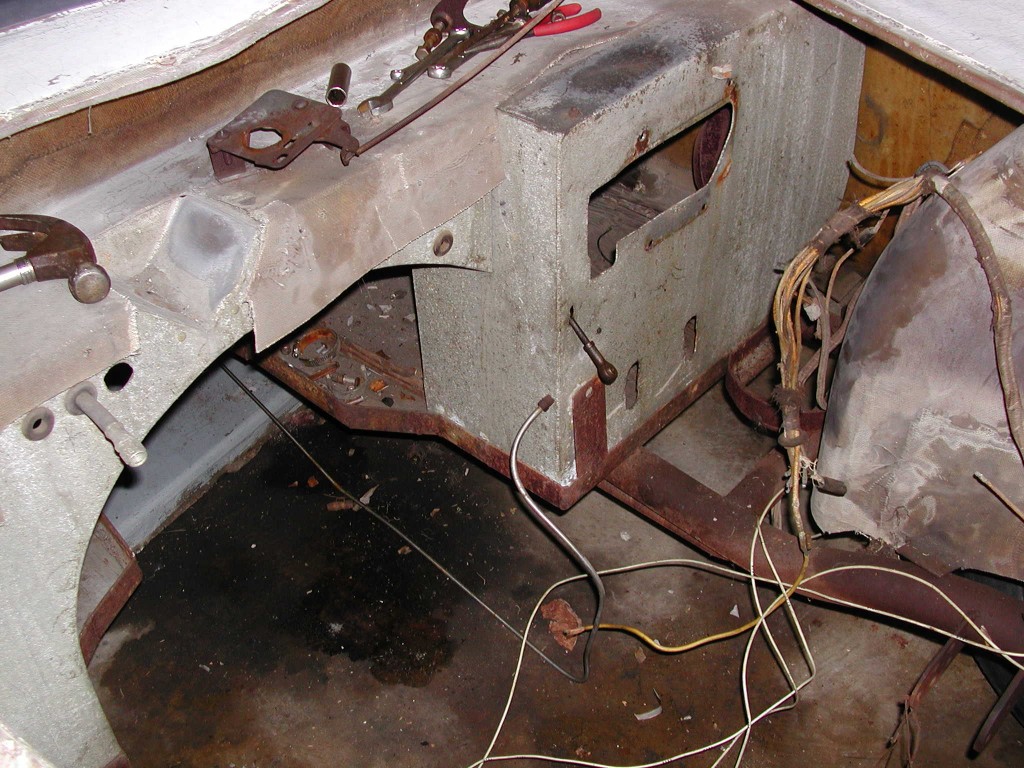

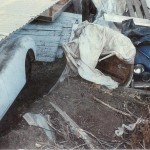
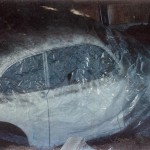
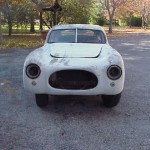
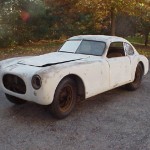
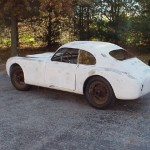
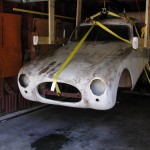
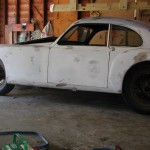
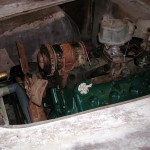
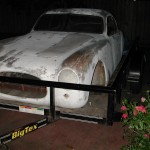
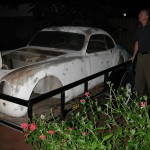
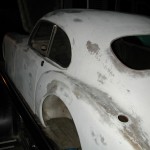
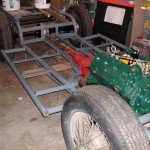
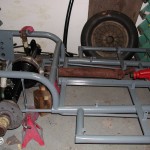
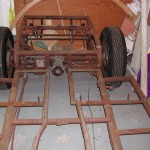
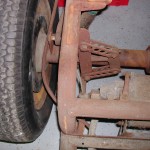
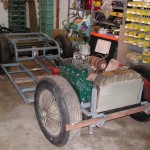
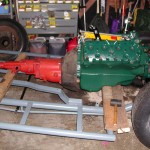
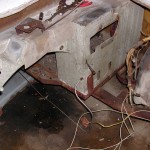
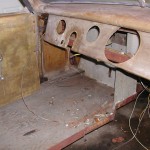
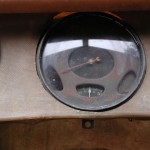
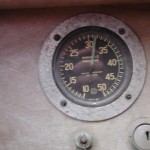
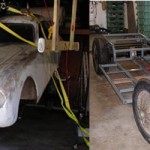
great site http://www.bucklecoupe.com.au
First a correction…The Conze family operated a machine shop in south Los Angeles and please not the spelling of thier name.
I knew the brother, Vince, who was a real auto racing innovator during his time….and a regular visitor to the Halibrand shop during the many years I toiled there.
The 220 CID Offy was an engine that was the outgrowth of a racing boat engine that was produced by Harry Miller. Any of these engines could be made to run on gasoline by reducing the compression ratio to one that was approprate for gasoline. Alcohol fuel was used in racing because is was lee inclined to detonating spark timing and the fast route to horsepower is via raising compression ratios.
It used to be a practice at the Indy 500 to use alcohol fuel for qualification runs then switch to gasoline for the race due to the economy of this fuel.
This is a very interesting story especially for me since I personally knew all the folks who are mentioned in the tale.
Bob Falcon
Hi Bill,
I think it’s really great what you are doing. I fully support the path you’ve elected to travel in this resto, especially with regards to the power train. Cunningham ran the C6 at Le Mans and it proved to be a poor outing at the French classic 24 hour event, mainly due to the rules stating that you must run French fuel, which was notriously poor in quality. This ultimately led to the Offy powered C6 retiring, as the Offy mill just couldn’t cope with the swill that the French considered fuel in the mid 1950s.
A flathead in a car like this would just look awesome, and that quick change rear is simply a wonderful site to see.
All the best in your efforts to complete this build!
Will